ProPhoto RGB is not recommended as an 8-bit color space, but I thought I’d start there. I took all 16+ million colors in sRGB and converted them to PPRGB and back, quantizing to 8-bits per color plane after each conversion. The conversions themselves were performed algorithmically (no tables involved) with double precision floating point, and have errors on the order of 10^-14 CIELab DeltaE. I looked at the CIELab DeltaE errors after each iteration, computed some stats, and watched how they changed.
The worst-case results are truly awful, but I was surprised by how little damage there was to the mean and standard deviation.
Here’s the original image:
Here’s the error image after 50 iterations, normalized to worst-case equals full scale, and gamma-corrected with a gamma of 2.2:
Here’s the error image multiplied by 3 to show the smaller errors better:
Here’s a closeup of the upper left corner:
And the lower tight corner:
The patterns are pretty, but that’s about all I get out of the error images.
If we take all 16 million colors representable in 8-bit PPRGB to Lab and back over and over, quantizing to 8-bits after each conversion, we get these curves:
I’m a little surprised that the entire PPRGB gamut appears to lie within the Lab gamut. There are RGB triplets in PPRGB that don’t correspond to visible colors, and there are RGB triplets in Lab that don’t correspond to visible colors, but it’s surprising that all the PPRGB ones are representable in Lab. I did use a D65 spectrum sampled by the 2 degree standard observer for the Lab white point, if it make a difference.


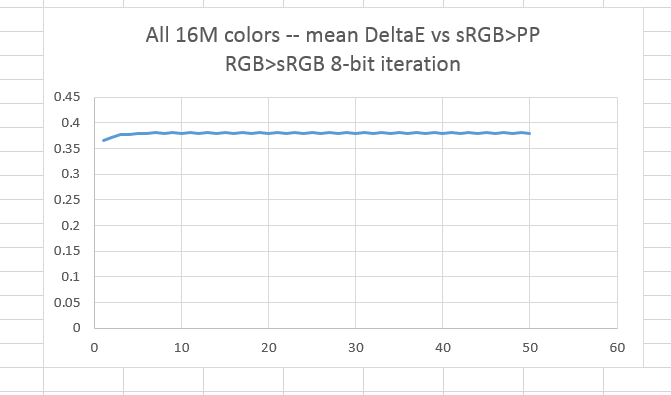
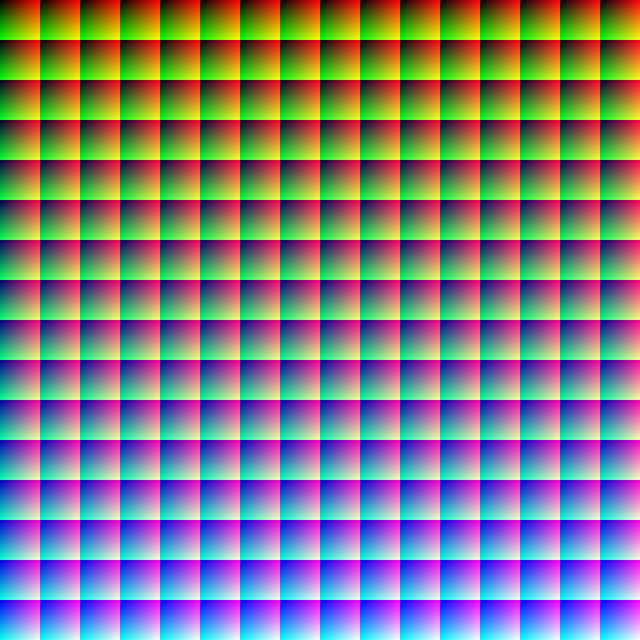




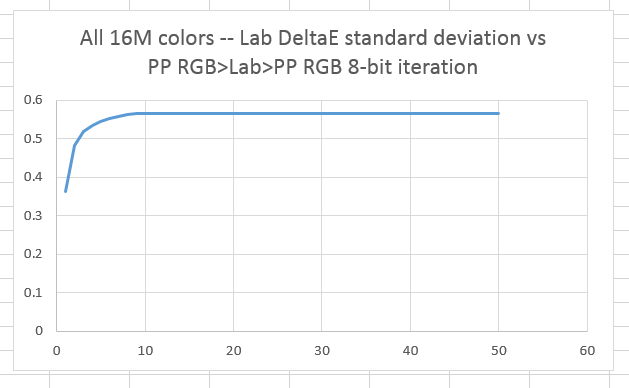
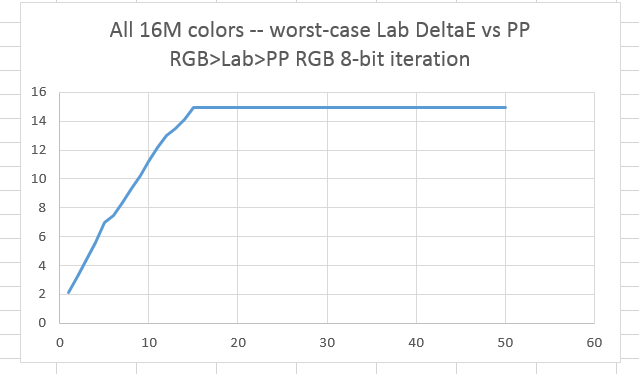
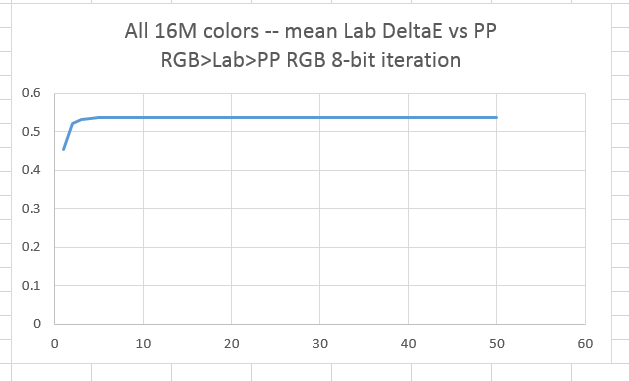
Leave a Reply